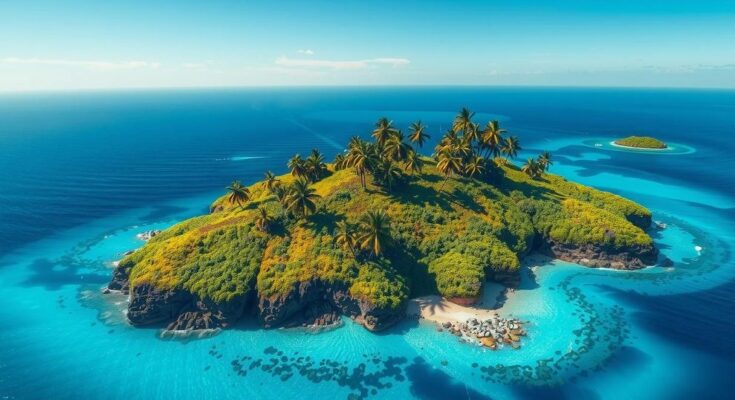Mayotte is a French overseas department comprising two main islands in the Comoros archipelago. It is the poorest territory in France and the EU, with a population heavily influenced by both French and indigenous cultures. The island’s economy relies on the service sector and agriculture, while its historical status has evolved since the 19th century, with major changes occurring in 2011. Mayotte faces ongoing socioeconomic challenges and was recently devastated by Cyclone Chido.
Mayotte is an overseas department of France encompassing two islands in the Comoros archipelago, situated in the Mozambique Channel of the Indian Ocean. It ranks as the poorest territory in France and the European Union. The capital, Mamoudzou, is located on Grande Terre, also known as Mayotte, which spans an area of 144.5 square miles (374.2 square kilometers). The smaller island, Pamandzi, is connected by a causeway to Dzaoudzi, a notable port.
The geography of Mayotte features a volcanic mountain range, and its climate is warm and humid, with average temperatures ranging from 75 °F (24 °C) to 81 °F (27 °C) and annual rainfall averaging 200 inches (5,000 mm). The lush vegetation is primarily composed of tropical evergreen forests. The administrative structure includes a French-appointed prefect and a locally elected Departmental Council, with François-Xavier Bieuville as the Prefect and Ben Issa Ousseni as the President of the Council.
As of 2025, the estimated population is 338,100 with a youthful demographic, where over 40% are under the age of 15. The majority of the population, known as Mahorais, practice Sunni Islam and are influenced by French culture, though a Roman Catholic minority exists. Comorian, a language related to Swahili, predominates in local communication.
Economically, Mayotte relies heavily on the service sector, agriculture, and aid from metropolitan France. Primary cash crops include vanilla and ylang-ylang, while the island exports ylang-ylang extract and farmed fish. Infrastructure includes a network of roads and an international airport in Dzaoudzi, facilitating connections with France.
Historically, Mayotte’s Islamic transformation began in the 15th century with Arab incursions, later influenced by colonization under French rule in the 19th century. Following a 1975 independence declaration by Comoros, Mayotte chose to remain with France, which solidified its status as an overseas department in 2011 after overwhelming support in a referendum. Despite this, Mayotte has faced challenges, such as severe poverty and, most recently, the devastating impact of Cyclone Chido in December 2024, which displaced a significant portion of the population.
Mayotte, as an overseas department of France, presents a unique profile characterized by its geographical features, diverse population, and historical context. The island’s economy remains heavily reliant on France, despite ongoing poverty challenges. Cyclone Chido’s recent destruction underscores the vulnerabilities faced by the local population. There is a pressing need for enhanced infrastructure and support to recover from such disasters and uplift the standard of living.
Original Source: www.britannica.com




